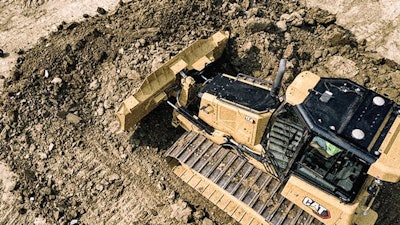
It’s being called a “once-in-a-generation” infrastructure bill — with a trillion-plus dollars allocated to overhaul the U.S. public works system and start new road, highway, airport and other transportation projects. What exactly is included in the Infrastructure Investment and Jobs Act (IIJA), what does it mean for the construction industry, and are you ready for what it may bring? Here’s a quick look.
What’s in the infrastructure bill?
Signed into law on November 15, 2021, the IIJA funds $1.2 trillion in infrastructure projects. That includes roads and bridges ($110 billion), electrical grid improvements ($73 billion), passenger and freight rail ($66 billion), broadband internet infrastructure ($65 billion), water infrastructure ($55 billion), airport maintenance and improvements ($25 billion), and port and waterway improvements ($17 billion), along with a host of other projects.
The IIJA also includes an element called One Federal Decision (OFD), designed to streamline the permitting process that can cause big delays on many infrastructure projects. OFD could shrink the permitting timeline from up to 10 years all the way down to two years.
What does the bill mean for construction contractors?
In a nutshell, the potential for enormous growth. About half of the $1.2 trillion must be spent over the next five years, which means a lot of new projects need to be “shovel-ready” fast. Some economists are predicting the biggest boost to come in 2023, with steady growth in 2024, 2025 and 2026 as well.
Is the construction industry ready?
Though a big influx of work is welcome, it comes at a challenging time. Labor shortages continue to dog the industry. A U.S. Chamber of Commerce survey last summer found that 88% of contractors were having moderate or high difficulty finding skilled workers — and 35% had turned down work as a result. Supply chain issues also remain a problem, leading to rising prices and delays in obtaining materials. Contractors will have to be strategic to overcome these challenges while taking on a bigger workload.
What can you do to prepare?
Start reaching out to state departments of transportation and municipalities to gauge just how much work might be coming your way. That’ll help you determine if (and when) you should plan to add equipment to your fleet or operators to your payroll.
Evaluate the state of your fleet. Are there any repairs or rebuilds you can get done early this year, so your equipment’s ready when the work picks up? Is your maintenance plan solid? You may want to look for opportunities to automate or hand off some of that work so you can stay focused on what’s happening on the jobsite. A Customer Value Agreement is a good place to start.
Keep embracing technology. If the labor shortage drags on, it can help fill the gap. Many grade control systems, for example, eliminate or significantly reduce the need for surveyors and grade checkers — freeing up workers for other tasks. Operator-assist and automation features on today’s machines (like these on Cat dozers) let you put less experienced operators behind the controls and get them working productively fast.



















